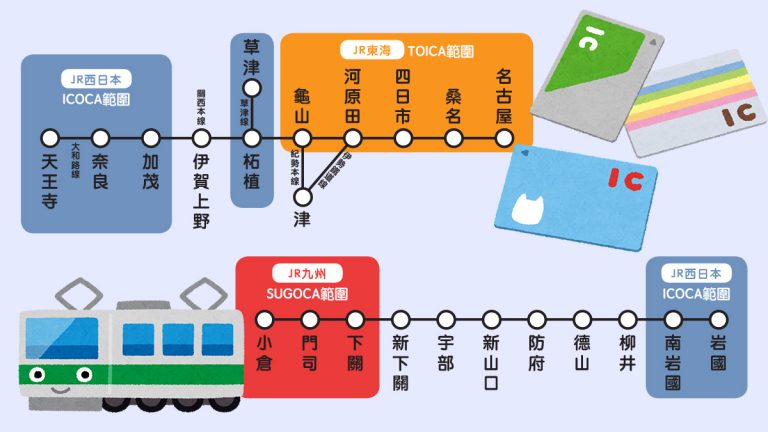IC cards such as Suica and Pasmo card are the most commonly used travel card in Japan. The ten cards are valid on virtually all trains, subways and buses in most of Japan’s major cities, including Tokyo, Osaka, Kyoto, Nagoya and Fukuoka.However, there are a few issues to keep in mind, such as the restriction of using it between different IC card areas.

Find the IC card nationwide inter-operation logo
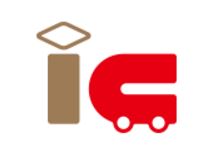
Look for the special logo above in train stations or on buses to see if they accept IC cards. The nationwide inter-operating IC cards include Suica, PASMO, Kitaca, TOICA, manaca, ICOCA, SUGOCA, nimoca, huyakaken and PiTaPa. OKICA from Okinawa is excluded. Since 2013 when IC card companies started inter-operation, most of the public transports apply to the scheme.
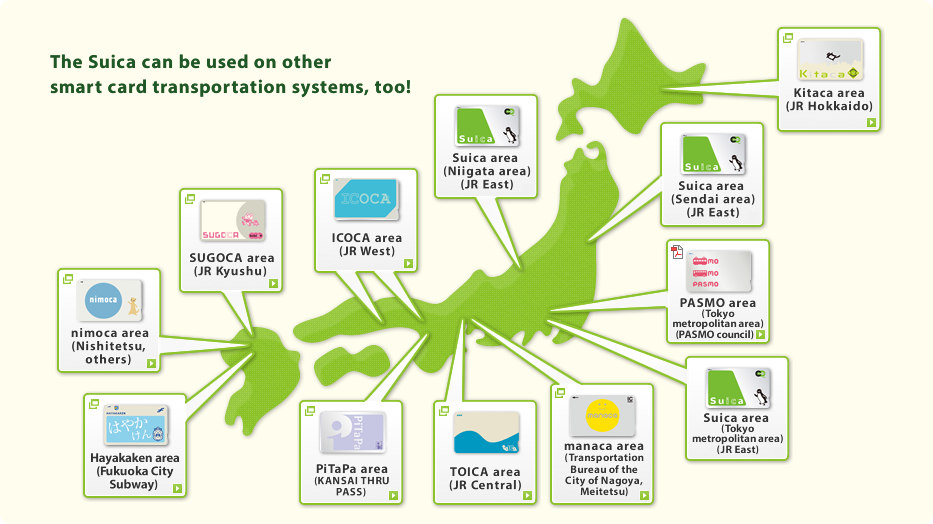
A separated ticket is required when crossing IC card areas
It is not possible to travel outside IC card areas. Both, the origin and destination stations have to be located inside the IC card coverage area. Furthermore, it is not possible to use an IC card to travel between disjoined IC card areas. For example, you cannot use it to travel between Tokyo (Suica area) and Numazu (TOICA area), even if they are just nearby. You will possibly get jammed inside the gate.
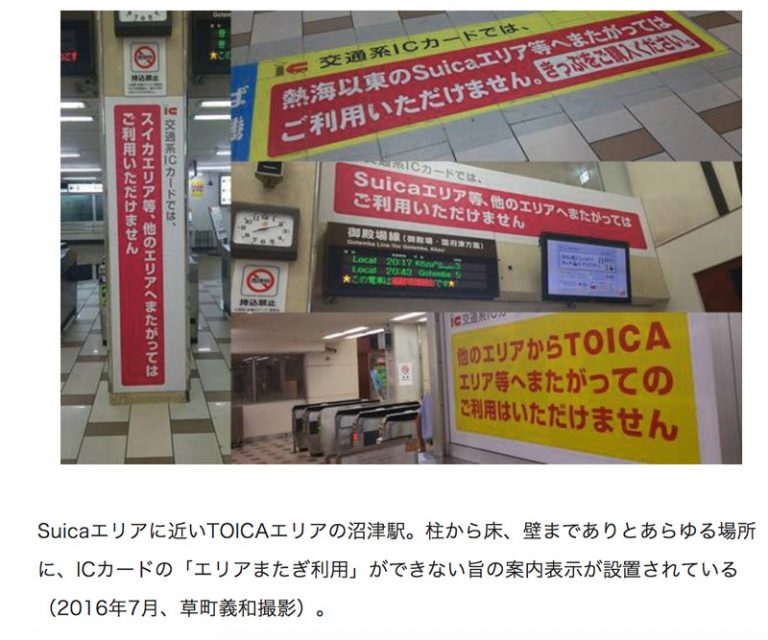
You cannot travel from Tokyo Station (Suica area) to Osaka Station (ICOCA area) with only one Suica card, nor travelling from Nagoya Station (TOICA area) to Osaka Station (ICOCA area) with only one IC card type. Therefore, if you did not purchase any pass, buying a one-way ticket shall be your only option to travel between different IC card areas. If you, unfortunately, get “trapped”, please contact any staff to see if it is possible to recalculate the fare or repurchase a ticket at the respective station.
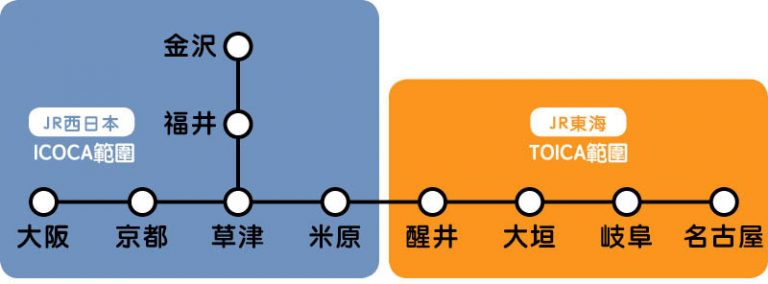
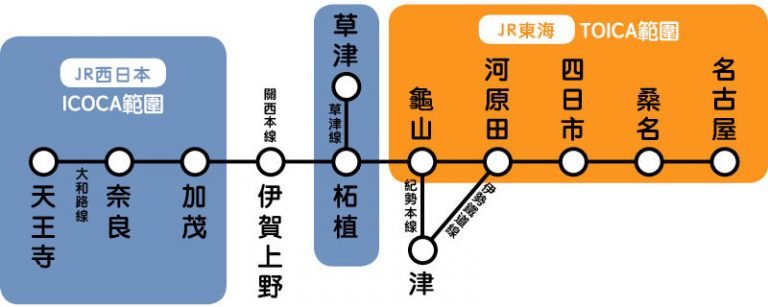
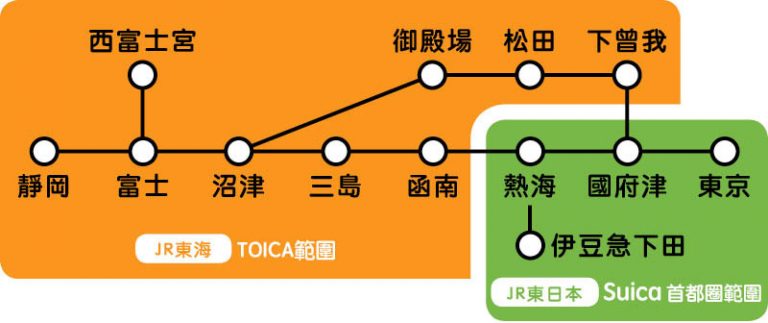

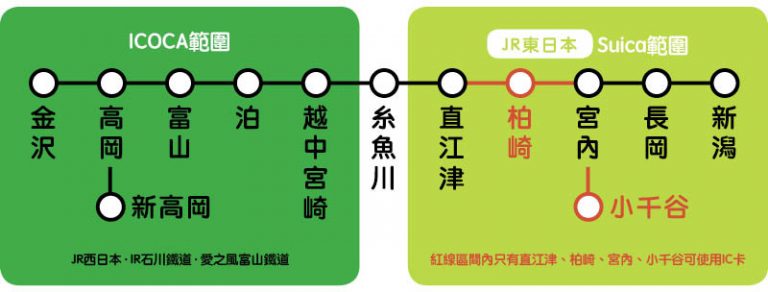
Restrictions of Suica & PASMO card around the Greater Tokyo Area
Although Suica, PASMO and other IC cards generally apply to all transport in Kanto area, some private train companies and special lines are excluded from the service. Those trains or stations do not have ticket gates or automatic IC card reader, hence, a one-way ticket or respective JR/ train pass is required. Please find some examples from below:
Ibaraki Prefecture
- Kagoshima Line (in addition to Kagoshima-Jingu Station and Kagoshima Soccer Stadium Station)
- Suikun Line (except Kami-Sugaya Station, Hitachiomiya Station, Hitachidaigo Station, Hitachioda Station)
- Kanto Railway: Joso Line and Ryugasaki Line (Suica and PASMO only)
- Kagoshima Rintetsu Railway: Oarai-Kashima Line
- Hitachi-Naga Seaside Railway: Minato Line
- Mooka Railway
Tochigi Prefecture
- Karasuyama Line
- Tohoku Main Line: Kuroiso ~ Shin-Shirakawa, to Koriyama, Fukuyama, Sendai
- Direct JR and Tobu train (Nikko Express, Kinugawa, SPACIA Kinugawa), from Shinjuku, Omiya ~ Tobu-Nikko, Kinugawa Onsen
- JR Ryomo Line (only between Ashikaga Flower Park Station and Tomita Station)
- Mooka Railway
- Yagan Railway: Aizu Kunugawa Line
- Watarase Keikoku Line
Gunma Prefecture
- Joetsu Line: Minakimi~Echigo-Yuzawa, Nagaoka
- Agatsuma Line (except Nakanojo Station, Naganohara-Kusatsyguchi Station, Manza-Kazawaguchi Station)
- Jomo Electric Railway
- Joshin Electric Railway
- Watarase Keikoku Line
Saitama Prefecture
- Chichibu Railway
Chiba Prefecture
- Kagoshima Line
- Kururi Line
- Chiba Urban Monorail (Suica and PASMO only)
- Ryutetsu Nagareyama Line
- Yanaman Yukarigaoka Line
- Shibayama Railway Line/ Shibayama-Chiyoda Station
- Kominato Railway Line
- Isumi Line
- Choshi Electric Railway Line
Kanagawa Prefecture
- Tokaido Main Line: Atami~Mishima, Numatsu~Shizuoka, Kanamicho~Atami, Tokyo
Shizuoka Prefecture
- Tokaido Main Line: Atami~Mishima, Numatsu~Shizuoka, Kanamicho~Atami, Tokyo
- Minobu Line: Nishi-Fujinomiya~Minobu, Kofu
- Iida Line
- Izu-Hakone Railway: Sunzu Line, Jikoku-Kosaku Line
- Gakunan Electric Train
- Oigawa Railway
- Tenryu Hamanako Railway
- Entetsu Railway

